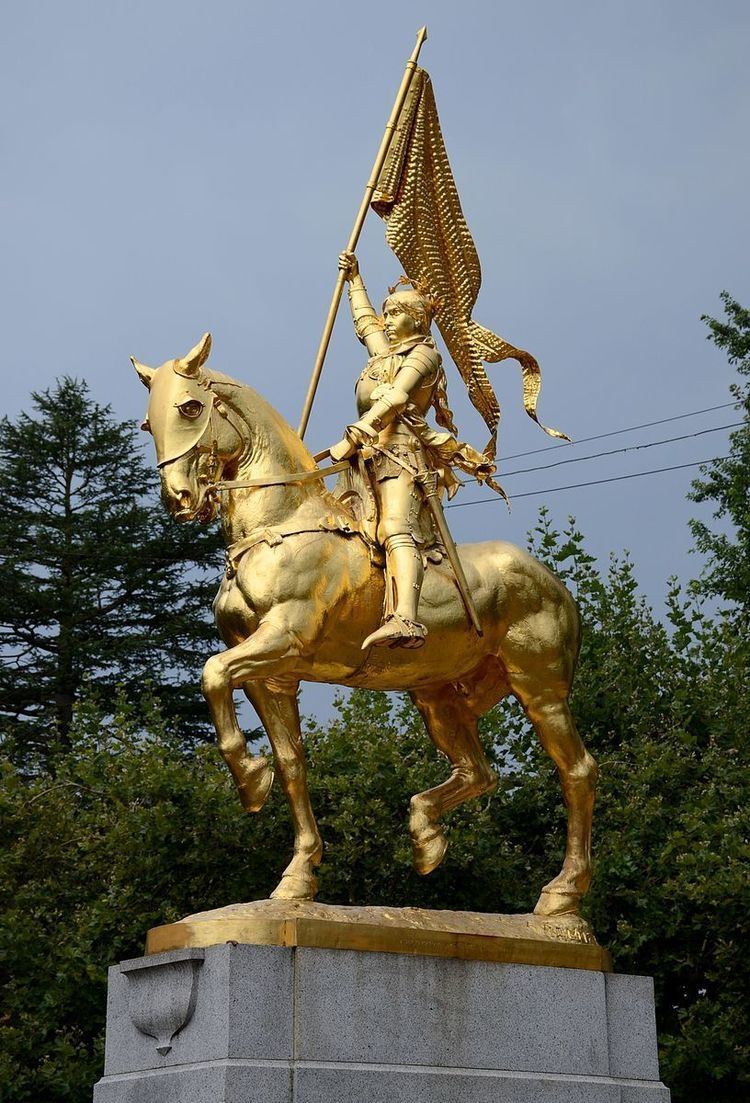Type Sculpture Subject Joan of Arc | Artist Emmanuel Frémiet | |
 | ||
Medium Sculpture: Bronze, copper
Base: Granite Condition "Treatment needed" (1993) Location Portland, Oregon, United States Similar Triad, Jeanne d'Arc, Portlandia, Liberty Bell, Allow Me | ||
Where we live portland s joan of arc statue
Joan of Arc, also known as Joan of Arc, Maiden of Orleans, is an outdoor copy of Emmanuel Frémiet's equestrian statue Jeanne d'Arc (1874), installed in Portland, Oregon's Laurelhurst neighborhood, in the United States. The bronze sculpture, which depicts Joan of Arc, was donated to the city by Henry Waldo Coe, who saw Frémiet's original statue in Paris. Portland's copy arrived from France in 1924 and was dedicated on Memorial Day in 1925 in honor of the Doughboys of World War I.
Contents
- Where we live portland s joan of arc statue
- Joan of arc from domremy
- Description and history
- References
Joan of arc from domremy
Description and history
Joan of Arc is an outdoor equestrian statue installed in Coe Circle, at the intersection of Northeast 39th and Glisan, in Portland's Laurelhurst neighborhood. The sculpture is one of several copies of Emmanuel Frémiet's 1874 gilded bronze statue, Jeanne d'Arc, which is installed at the Place des Pyramides in Paris. Portland's statue is also made of bronze and measures approximately 12 feet (3.7 m) x 5.5 feet (1.7 m) x 9 feet (2.7 m). The flag held by Joan of Arc is made of copper. The statue rests on a granite base that measures approximately 8 feet (2.4 m) x 3 feet (0.91 m) x 9 feet (2.7 m).
The statue was added to Coe Circle in 1925. It was one of four statues given by Henry Waldo Coe to the City of Portland. It was made from the original molds of Frémiet's statue, which Coe saw on a visit to France. Portland's statue arrived from France in 1924 and was dedicated on Memorial Day, May 30, 1925, honoring the Doughboys of World War I.
